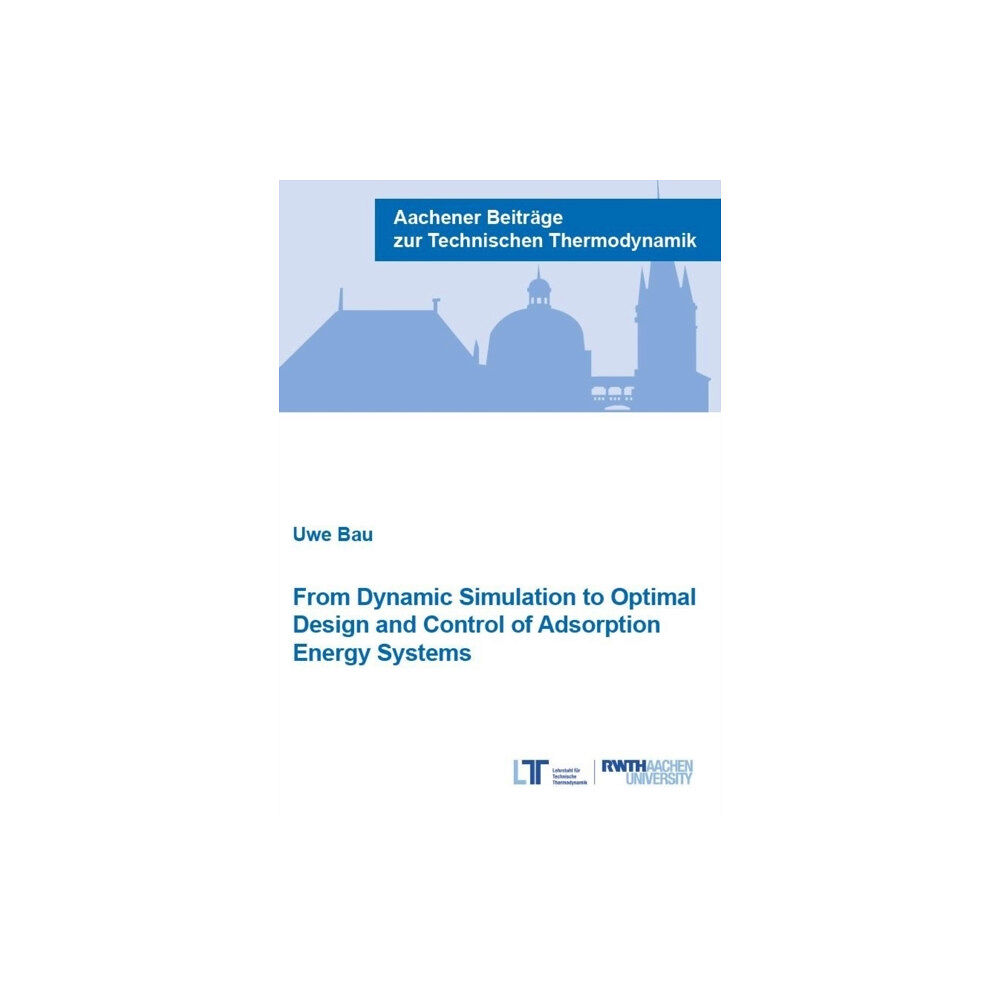- Hem
- Böcker
- Kurslitteratur
- Teknik, Industri & IT
- From Dynamic Simulation to Optimal Design and Control of Adsorption Energy Systems (häftad, eng)

From Dynamic Simulation to Optimal Design and Control of Adsorption Energy Systems (häftad, eng)
Worldwide heating and cooling demand will rise significantly over the next decades. Adsorption energy systems, namely adsorption chillers...
- Fri frakt
Produktbeskrivning
Worldwide heating and cooling demand will rise significantly over the next decades. Adsorption energy systems, namely adsorption chillers and heat pumps, have the potential to provide parts of this demand environmentally friendly by employing solar heat or waste heat.
Designing adsorption energy systems is challenging due to the following reasons: (1) intrinsic dynamics, (2) multi-objectiveness, (3) large variety in design parameters, (4) strong influence of control, and (5) a large impact of input parameters such as temperatures.
In many studies, these effects have been investigated separately by conducting sensitivity analyses. To explore also the interactions between design, control, and input parameters, a simultaneous optimisation approach is presented and exemplified in this thesis.
Key to simultaneous optimisation are fast simulation models which capture the effects of all optimisation parameters.
To quickly model new advanced adsorption energy systems, an object-oriented, dynamic-model library is developed in the programming language Modelica.
To conduct a simultaneous optimisation of design and control, a multi-objective optimal control problem is formulated.
This optimal control problem includes the system dynamics which are captured in the dynamic process model. Additionally, point and path constraints are formulated, ensuring cyclic steady state. The multiobjectiveness is taken care of by employing the constraint method. The resulting single-objective optimal control problem is solved by the efficient multiple shooting algorithm MUSCOD II.
The developed optimisation framework is used to rigorously analyse the interaction between adsorber-bed design, component sizing, thermodynamic cycle, and control.
The framework is also used to investigate the effect of the objective function and of varying input temperatures on design and control. The multi-objective optimisation results are used to discuss the trade-off between efficiency and power density by employing the Pareto frontier.
Finally, simulation models and optimisation framework are used to set up a model predictive control (MPC).
The MPC allows to identify and adjust the optimal control parameters based on varying input conditions. Based on these results, new heat-flow based heuristics are developed, which lead to a Pareto-optimal operation of one-bed adsorption chillers. Both MPC and heuristics are applied experimentally to a one-bed chiller.
| Format | Häftad |
| Omfång | 224 sidor |
| Språk | Engelska |
| Förlag | Verlag G. Mainz |
| Utgivningsdatum | 2018-03-08 |
| ISBN | 9783958862166 |
Specifikation
Böcker
- Häftad, 224, Engelska, Verlag G. Mainz, 2018-03-08, 9783958862166
Leverans
Betalning
Specifikation
Böcker
- Format Häftad
- Antal sidor 224
- Språk Engelska
- Förlag Verlag G. Mainz
- Utgivningsdatum 2018-03-08
- ISBN 9783958862166
